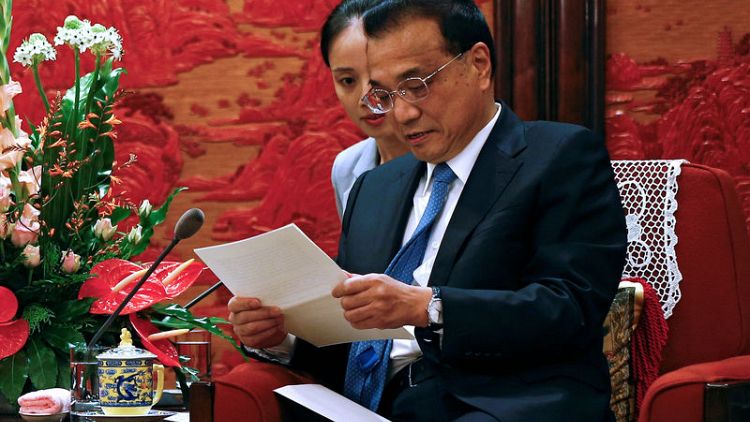BEIJING (Reuters) - Chinese state media on Wednesday offered further evidence that a secretive annual conclave of senior leaders is being held at the seaside resort of Beidaihe, saying that Premier Li Keqiang had met a United Nations official there.
Traditionally top party leaders visit the town every summer on an unofficial retreat to discuss personnel moves and policy ideas behind closed doors.
Li and President Xi Jinping have not appeared on the main evening news since the start of the month, as opposed to almost daily appearances normally, suggesting they may have been in Beidaihe.
The government typically does not confirm the Beidaihe meetings are happening, with the only clues coming from state media dispatches datelined Beidaihe about often quite mundane events, rather than describing the leadership discussions.
In a brief dispatch, state radio said Li had met United Nations General Assembly President Maria Fernanda Espinosa in Beidaihe, where the two discussed the need to promote free trade, against the backdrop of China's trade war with the United States.
Over the weekend, state media had also said Chen Xi, who as head of the Organisation Department oversees the ruling Communist Party's personnel decisions, had been told by Xi to visit "vacationing experts" in Beidaihe. It said Vice Premier Hu Chunhua had accompanied Chen.
Sources with ties to the leadership and foreign diplomats have told Reuters the Beidaihe meeting was likely in early August.
Beidaihe, about two hours east of Beijing by high-speed train, is steeped in party history, though sources with ties to the leadership say Xi is not a fan of the place.
Its beginnings date from the late 19th century, as a resort for Western missionaries and traders to escape the summer heat, though few buildings from those days still stand.
After the communist takeover in 1949, it became a venue for leaders to relax with family and talk in private with peers.
The founder of modern China, Mao Zedong, was particularly fond of it, and his calligraphy of a poem he composed there is displayed around the town.
(Reporting by Ben Blanchard; Editing by Clarence Fernandez)
